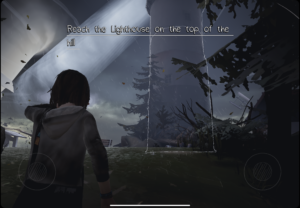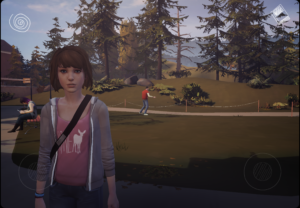I played Life is Strange, a narrative walking sim game. Like many games of its genre, this game uses very simple mechanics – you can drag one side of the screen to look around and the other to move. As you approach certain objects, there are clear instructions about what you can do with them – i.e. snap a picture with a camera. With some objects and people, you can choose between a few options, such as things to say or actions to perform. As the game progresses, more mechanics come into play – for example, you can tap a spiral on the screen to rewind time.

The mystery of this game is closely tied to the mechanics. It begins with the sim caught in a thunderstorm and needing to reach a lighthouse for safety, but there is no other context given. Later, that is revealed to have been a dream, and the actual setting of the game is a school. As you go through the game, pieces of the narrative are revealed through interactions with other people and exploration of the school. At one point, the narrative reveals that the sim has the power to rewind time, thus introducing the new mechanic described previously. The overarching narrative, intertwined with the mechanics, is a mystery: without much context, the player must explore and piece together what is going on as the story slowly unravels.

The types of fun in Life Is Strange are narrative, fantasy, discovery, and, to some extent, expression and sensation. The expression comes from the ability to make choices, and the sensation comes from enjoying parts of the surroundings that are beautiful, including the music that changes throughout and adds to the narrative. Overall, Life Is Strange is a very enjoyable and mysterious game.


